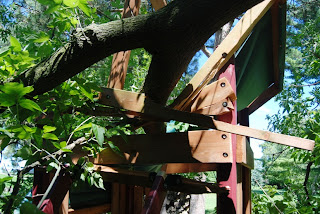
Ted Ownby, Subduing Satan: Religion, Recreation and Manhood in the Rural South, 1865-1920 (Chapel Hill, NC: UNC Press, 1990). 286 pages (this includes an extensive bibliography and endnotes). Numerous photos and tables.

I’m trying to get this review in under the deadline for the Southern Reading Challenge. This is the fourth book review I’m posting for the SRC, but it’s one of the ones I had originally planned on reading so I wanted to get it posted (I’ve read two of the three I’d planned on reading). Over the past few years, I have engaged in a study of Southern social history, partly to get in touch with my roots and partly to expand on my regional work in history that has focused on the American West. Subduing Satan is an academic work; I don’t recommend it for a good read on the beach.
Ownby explores the tension and conflict between the evangelical social norms and the prevalent male vices of the South in the post-bellum era. In a way, as he points out at the conclusion, this tension can still be seen in the regional music such as when Willie Nelson begins a concert singing about Whiskey River and concludes it with a heartfelt rendition of Amazing Grace. Another example is Elvis, a “flamboyant sinner,” known also as a gospel singer.
Subduing Satan is a social history of white southerners in the years between the Civil War and the Great War. During this time, men in the rural South were kept home on the farm except for the occasional visit to the town where drinking and gambling and fighting were common vices. Ownby explores this culture, from hunters who tried to outdo one another in the slaughter of game, to cockfighting and knightly tournaments, to harvest festivals and sharing agricultural chores. During most of this time, Protestant preachers railed against “masculine vices,” but there was little push for probation. As long as the vices were segregated (from women), preachers were happy to condemn them. As industrialization and technology began to bring the vices into the home as well as allowing women to be more easily found in the public sphere (thanks to the automobile and movie theaters), the push for laws against such vices occurred.
Ownby does a wonderful job of showing what life was like at this time in history in various realms of society (the field, the farm and plantation, the home, the church, Main Street, etc). He discusses reasons why Southern men seemed to enjoy a good fight and some of the underlying tensions dealing with racial relations and the role of women. This book would be valuable to anyone wanting to know how the past was different or any author wanting to more accurately portray life in this era.
For those wanting a more complete look at the role of religion in the South, especially in relationship to the rise of Southern Protestantism and the role the defeat in the Civil War played, I recommend the following two books:
Christine Leigh Heyrman, Southern Cross: The Beginnings of the Bible Belt (Chapel Hill, NC: UNC Press, 1997).
Charles Reagan Wilson, Baptize in Blood: The Religion of the Lost Cause, 1865-1920 (Athens, GA: Univ of GA Press, 1980).
For more book reviews by Sage, click here.
For Semicolon's Saturday's list of book reviews in blogs, click here.





















 My favorite part around Lake Pepin is the town of Alma. Here is one of the 27 locks and dams that allows the Mississippi to be navigated from St Louis to Minnesota’s Twin Cities. It takes what seems to be forever (over an hour) to move a tug boat pushing fifteen barges through. They have to split the load and push one set of barges through then the next. Still, I watched it all enthralled. Next to the river is the mainline for Burlington Northern Santa Fe. We were told that approximately 52 trains a day pass by the town of Alma. Not only were there BNSF trains, but also Canadian Nationals that used the line. On the other side of the river was the old Milwaukee Road line, which is now own by Canadian Pacific, or so I was told.
My favorite part around Lake Pepin is the town of Alma. Here is one of the 27 locks and dams that allows the Mississippi to be navigated from St Louis to Minnesota’s Twin Cities. It takes what seems to be forever (over an hour) to move a tug boat pushing fifteen barges through. They have to split the load and push one set of barges through then the next. Still, I watched it all enthralled. Next to the river is the mainline for Burlington Northern Santa Fe. We were told that approximately 52 trains a day pass by the town of Alma. Not only were there BNSF trains, but also Canadian Nationals that used the line. On the other side of the river was the old Milwaukee Road line, which is now own by Canadian Pacific, or so I was told.



















